A guide to Australia’s possums and gliders

In the black of night, Australia’s 27 species of possum and glider scamper across our roofs, dart along branches in secluded rainforests or peer tentatively from tiny hidey-holes.
Hissing, growling or completely silent, they perform a circus act of acrobatic feats, the larger gliders spreading their gliding membranes to travel more than 100 m at a single jump.
Some gliders have even been recorded doing a U-turn in mid-air.
With large eyes to capture more of the light at night, they’ve adapted to watch for owls, quolls and pythons, but their biggest threat – humankind – has increasingly encroached on their territory, destroying old-growth forest and its sheltering, century-old treehollow
sanctuaries.
Furry, cuddly and sometimes curious, possums and gliders are among Australia’s best-loved residents and a fascinating feature of night-life in the bush.
Greater glider
Petauroides volans
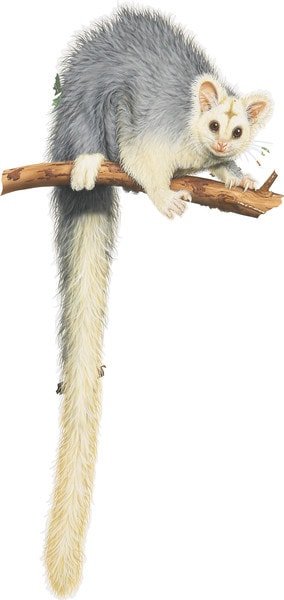
One of the most frequently seen gliders in spotlighting surveys on the Great Dividing Range, the greater glider is the largest of Australia’s gliders, 40 cm long, with a tail longer than its body, and weighing up to 1.7 kg. It has long, luxuriant fur, ranging in colour from creamy grey to black, is virtually silent and feeds almost exclusively on eucalypt leaves.
Feathertail glider
Acrobates pygmaeus
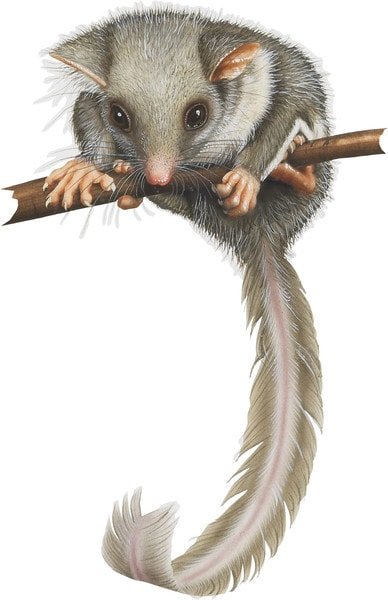
With a scientific name that means the pygmy acrobat, the fast-moving feathertail glider is the smallest of the gliding possums, weighing only 10–15 g. The most characteristic feature is its exquisite, 8 cm long feather-like tail that is the same length as its body. It also has sweat
glands on its feet that create surface tension, so the footpads can act like mini suction cups, able to stick to glass.
Western pygmy-possum
Cercartetus concinnus
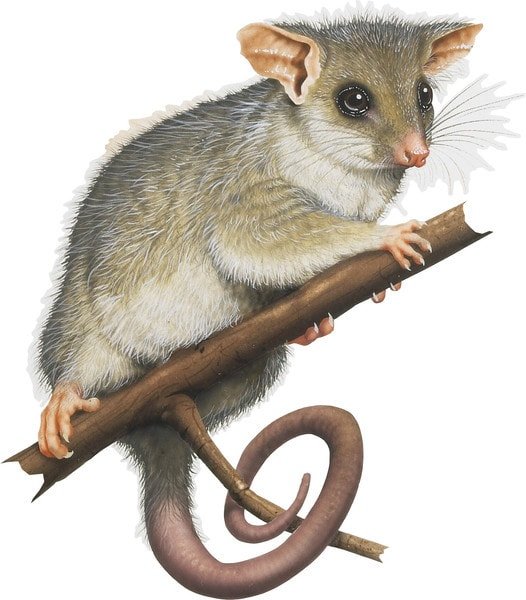
This tiny possum weighs around 15 g and is found feeding on nectar and insects in mallee heath and dry forest. It is light enough to climb and hang from long grass stems and often moves along the ground, sometimes sheltering during the day in a leaf-lined nest in a grasstree. Its most common indigenous name is mundarda.
Yellow-bellied glider
Petaurus australis
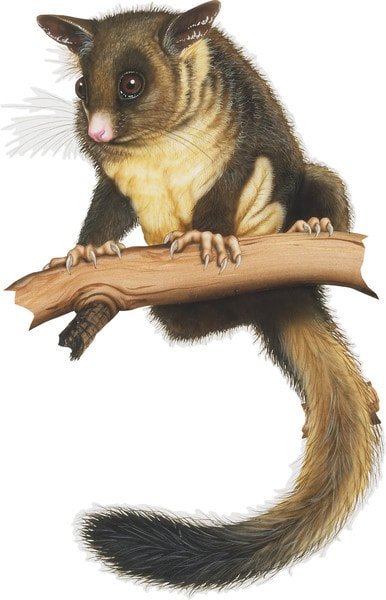
Sometimes called the fluffy glider, adults of this relatively light species are about 30 cm long with a buttermilk belly. Like some other gliders, the yellow-bellied chews holes in eucalypt trees in order to lick the weeping sap, and in north Queensland appears to do this exclusively on red mahogany trees. It has a loud shriek that can be heard hundreds of metres away.
Common brushtail possum
Trichosurus vulpecula
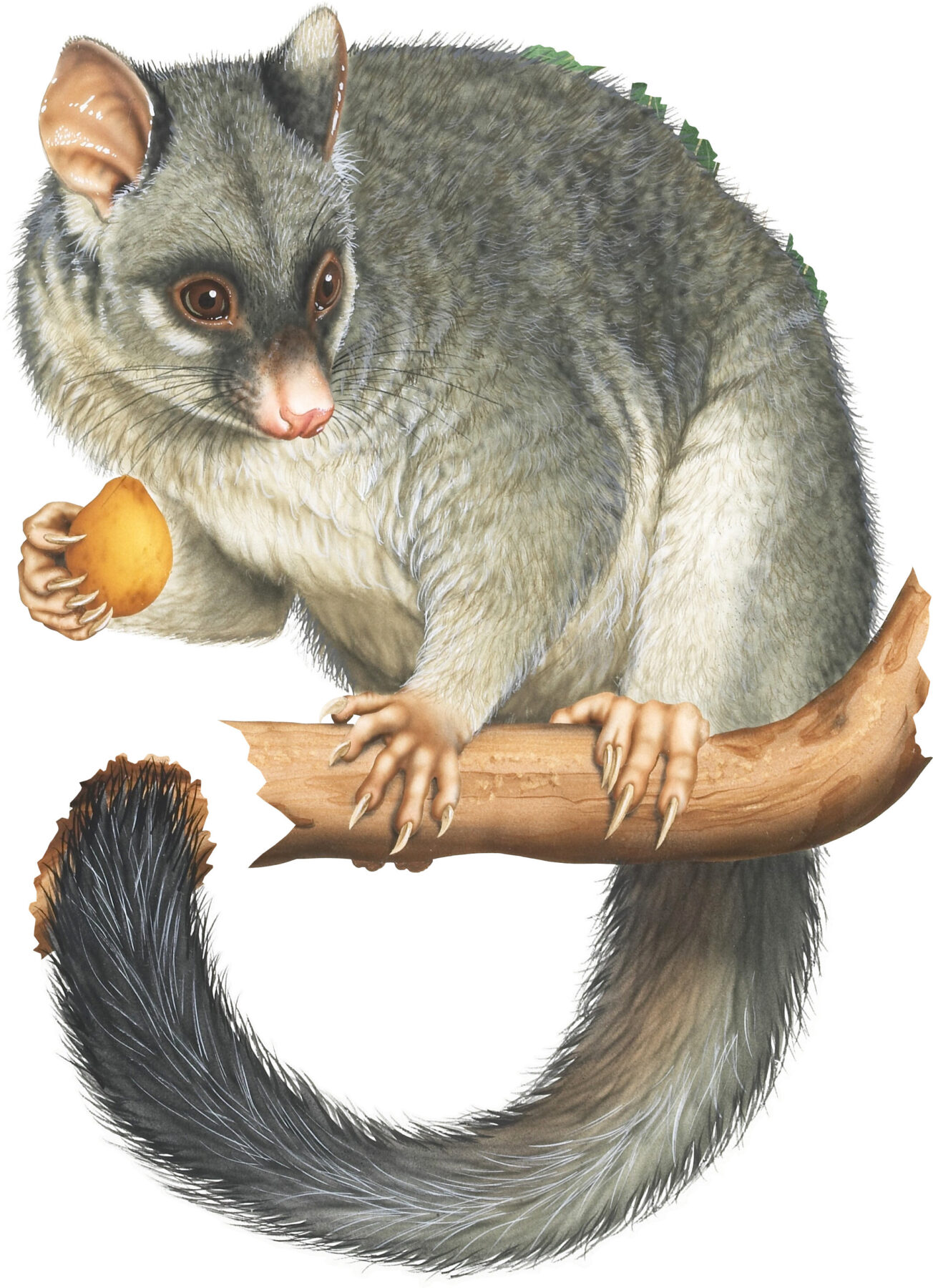
Loved and loathed in nearly all Australian capital cities, where it often takes up residence in roofs, the common brushtail has become a despised pest in New Zealand, having been introduced there for the fur industry in the mid-19th century. There are now tens of millions of possums there. Australian Geographic Society-sponsored research recently found the red-furred coppery brushtail possum of northern Queensland is the same species.
Squirrel glider
Petaurus norfolcensis
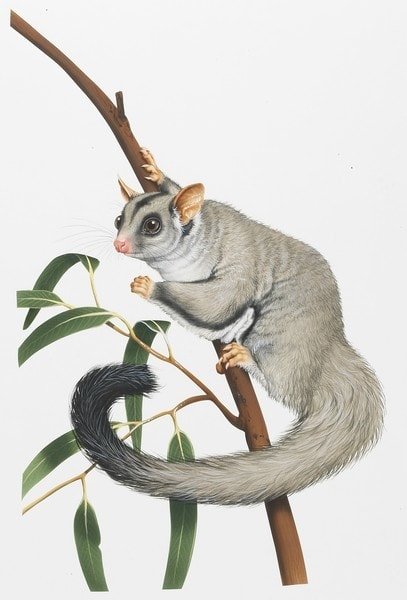
The squirrel glider is slightly larger than the sugar glider and has a much fluffier tail. Due to a mistake with the labelling of an early museum specimen, the squirrel glider’s scientific name wrongly refers to Norfolk Island. The creature isn’t found there, but in forests and woodlands of eastern Australia.
Daintree River ringtail possum
Pseudochirulus cinereus
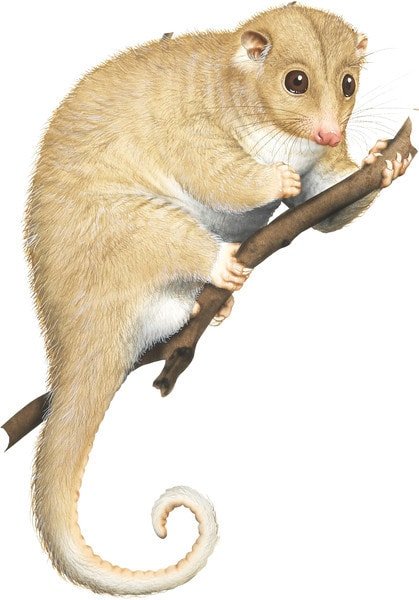
Locally called cuscus, the Daintree River ringtail possum was declared a species in 1989 after research proved it was genetically different from the Herbert River ringtail. A leaf-eater with a body length of about 35 cm, it’s found in only a handful of locations in northern Queensland, and only above 420 m in elevation.
Lemuroid ringtail possum
Hemibelideus lemuroides
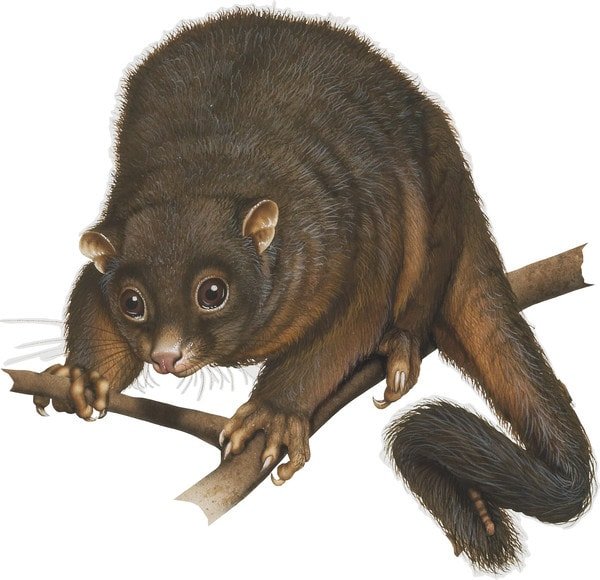
This nocturnal leaf-eater lives in north Queensland rainforests above altitudes of 450 m. In one isolated group living above 1100 m on the Mount Carbine Tableland, more than 10 per cent of the population is white. Unlike many other possums, it’s often seen in the company of its own kind.
Rock ringtail possum
Petropseudes dahli

This possum lives only in rocky outcrops and at night it climbs trees and shrubs to feed on flowers, fruit and leaves. With short legs and a stockier tail than most possums, it is adapted to life on the ground. It sleeps in family groups in well-protected rock crevices.
Mountain pygmy-possum
Burramys parvus

This is the only marsupial known to hibernate for extended periods. Found above 1400 m up to the Australian mainland’s highest point, 2228 m Mt Kosciuszko, the mountain pygmy possum hibernates for up to seven months in sheltered boulders under the snow. Often called burramys – from an indigenous word meaning stony place – the possum eats bogong moths, seeds and small fruits, and is considered rare and vulnerable.
Herbert River ringtail possum
Pseudochirulus herbertensis
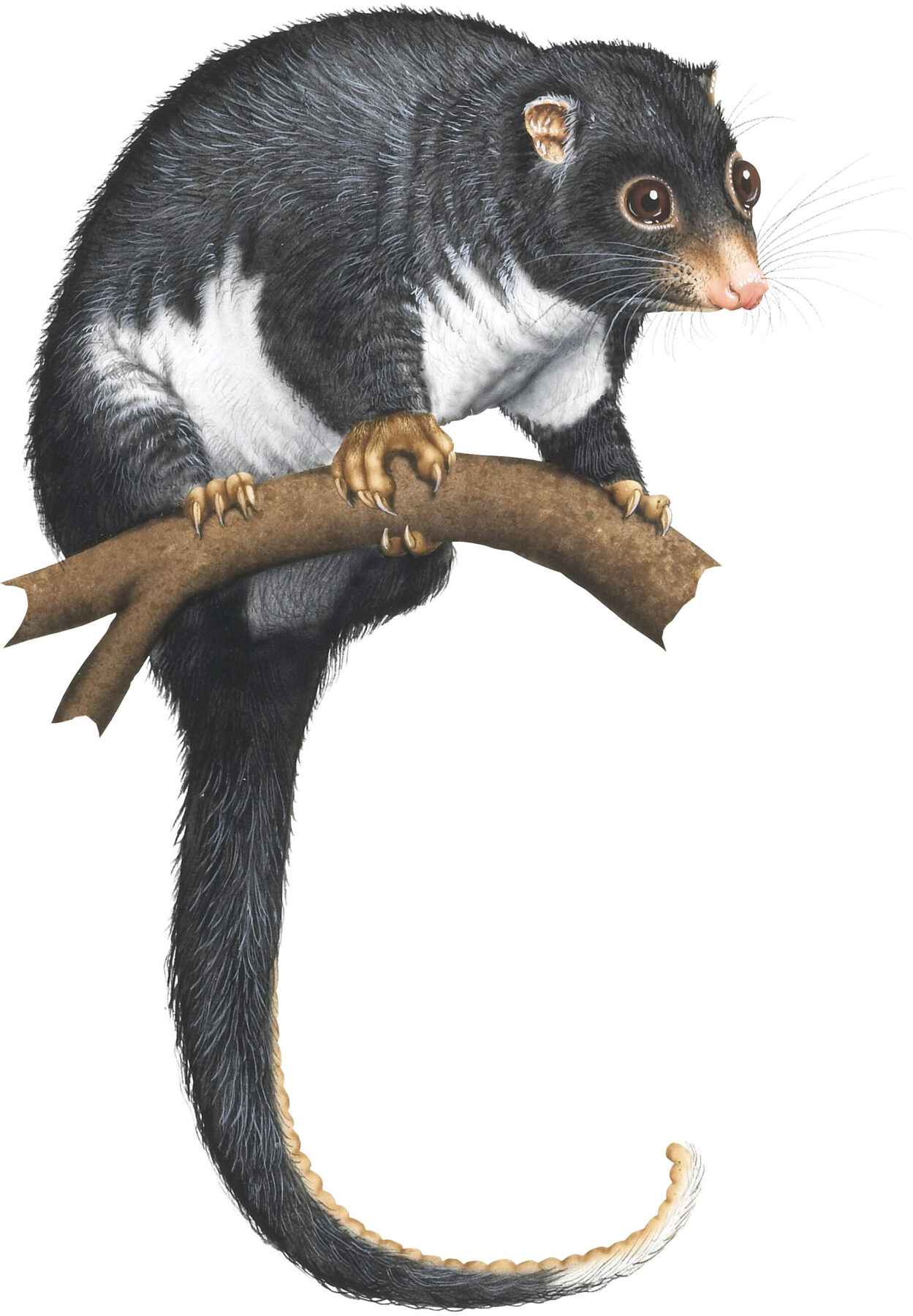
Black with a white belly and light tail tip, the Herbert River ringtail waits a full 10 minutes after dark before emerging from its den. Then it’ll spend about an hour grooming before moving off to feed on the leaves of rainforest trees. It ensures it’s safely back inside the den an hour before dawn.
Common spotted cuscus
Spilocuscus maculatus
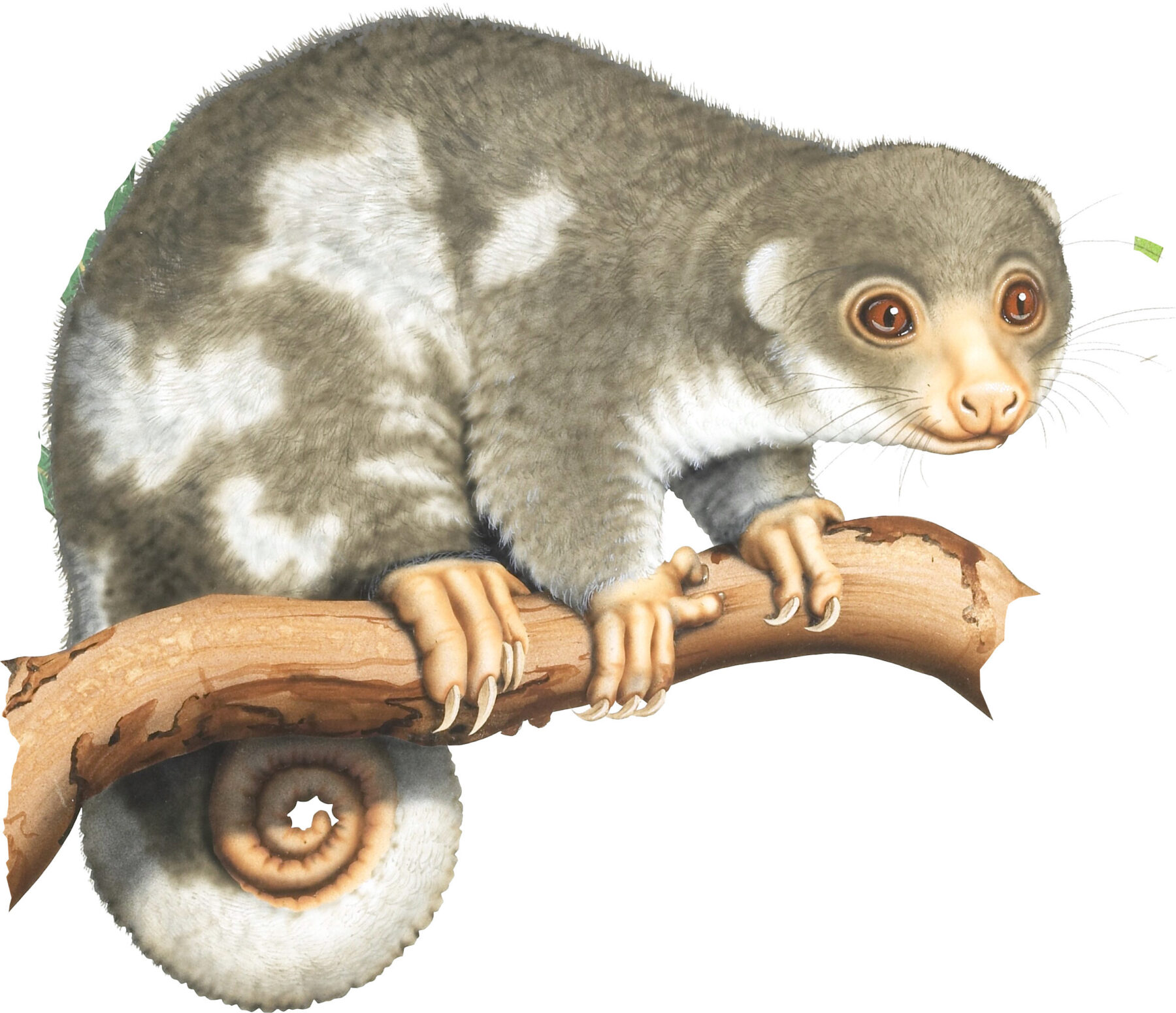
Weighing up to 5 kg, this inhabitant of Cape York Peninsula, New Guinea and some Indonesian islands is sometimes wrongly identified as a monkey. Mainly a fruit eater, it doesn’t sleep in tree hollows, but in thick forest canopy near rivers and streams, rarely using the same spot two nights in a row.
Sugar glider
Petaurus breviceps
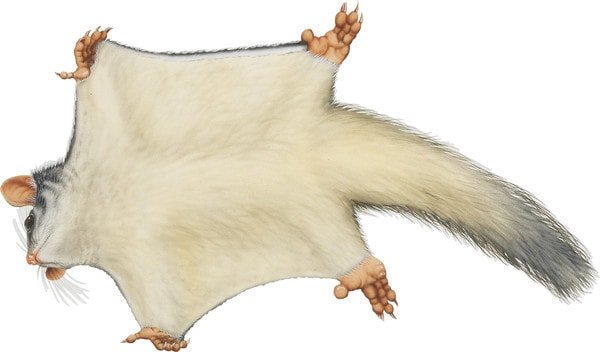
The most common and widespread of the Australian gliders, the sugar glider is found in Australia and New Guinea across a variety of habitats, including tall wet forests, open forests and woodlands. About 18 cm long, it makes a yapping call like a small dog, and has become popular in the legal pet trade, particularly in the USA.
Southern common cuscus
Phalanger intercastellanus
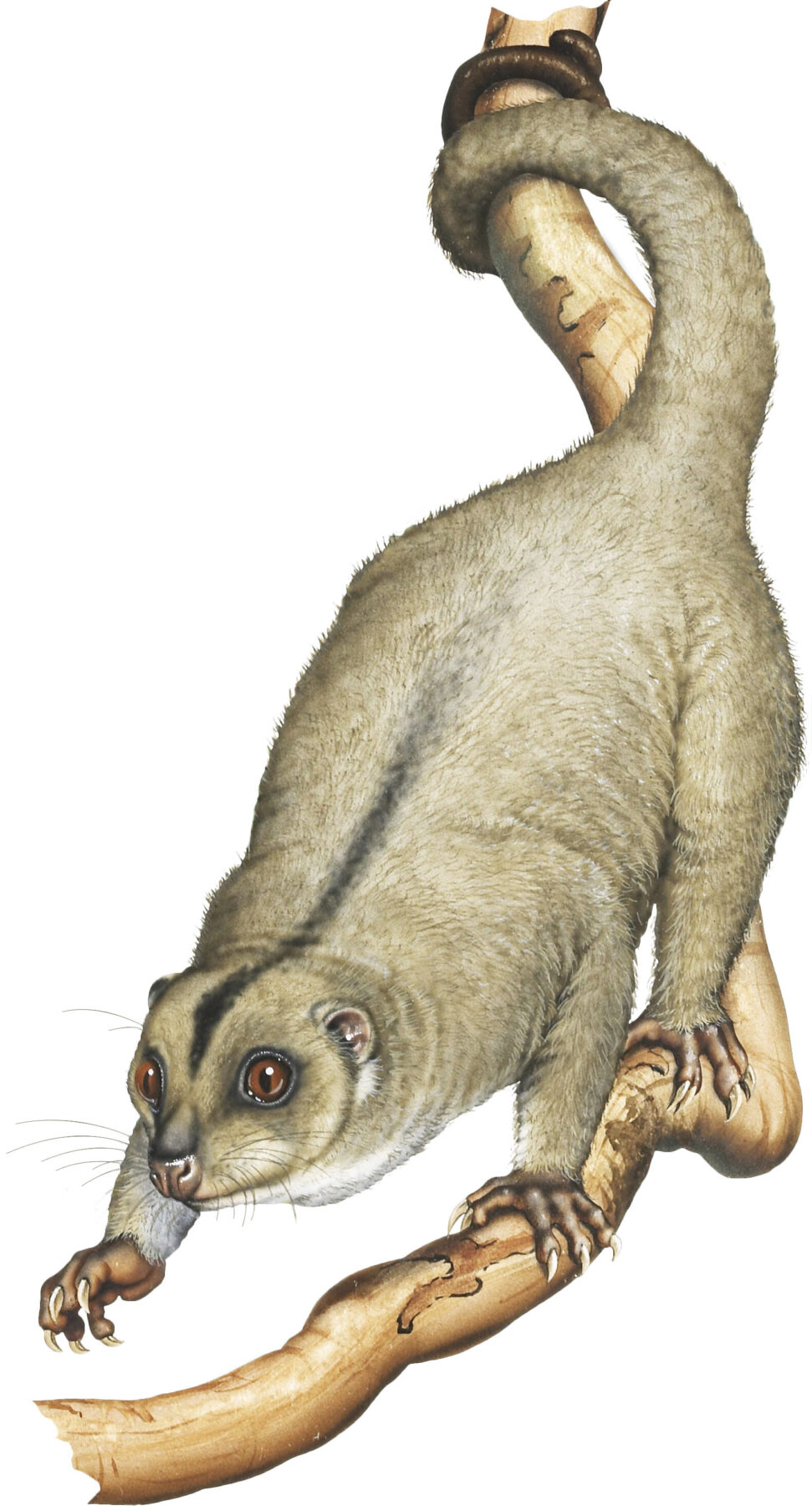
Cuscuses have long canine teeth, which may suggest that at least part of their diet is carnivorous, although they eat mainly fruits, leaves and flowers. Of slighter build than the common spotted cuscus, it rests in a tree hollow during the day.
Common ringtail possum
Pseudocheirus peregrinus
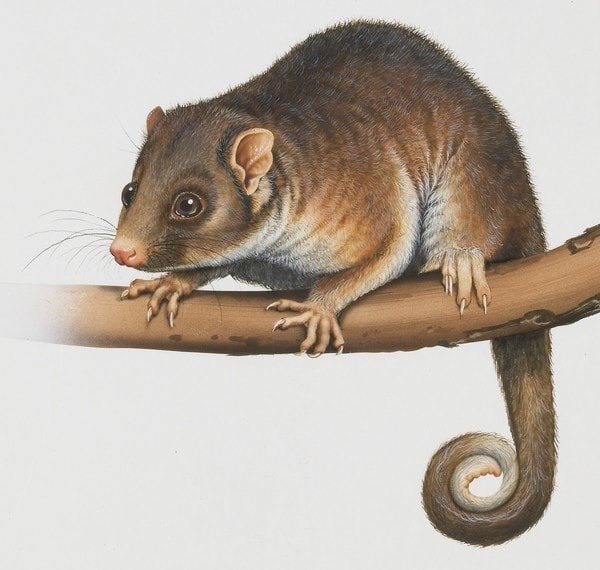
Mainly a leaf-eater, the common ringtail loves suburban gardens on the east coast, where it devours introduced fruits and flowers, especially rosebuds. A long friction pad on the underside of its 30 cm white-tipped tail helps when using the tail as an extra climbing limb or when carrying material for its football-sized nest of sticks, often called a drey.
Green ringtail possum
Pseudochirops archeri
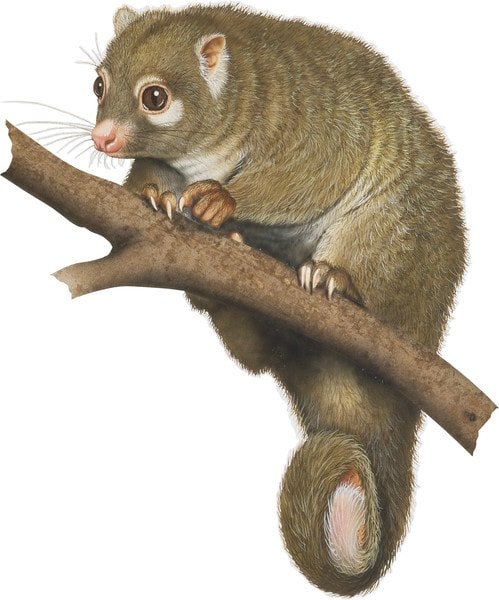
The thick fur of this 1 kg possum looks dark green, providing great camouflage in the dense upland rainforests in which it lives. To sleep, the quiet individuals simply hunch into a ball on a branch. It’s the only possum known to eat fig leaves.
Leadbeater’s possum
Gymnobelideus leadbeateri
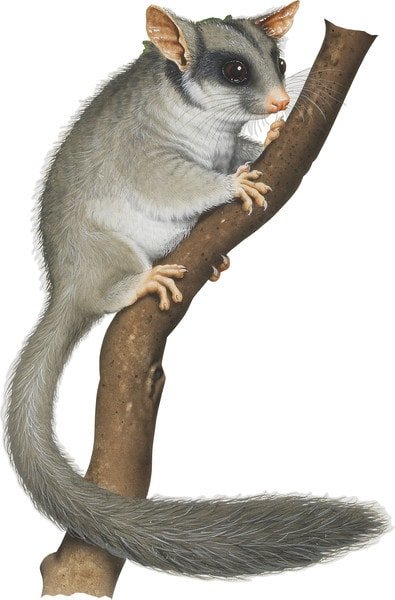
The only native mammal restricted to Victoria, Leadbeater’s possum takes its rightful place as that State’s mammal emblem. Its main habitat is mountain-ash forests, but the Australian Geographic Society has been sponsoring research into an isolated population living in a lowland swamp. The Leadbeater’s possum looks very similar to the sugar glider, but has no gliding membrane.
Mahogany glider
Petaurus gracilis
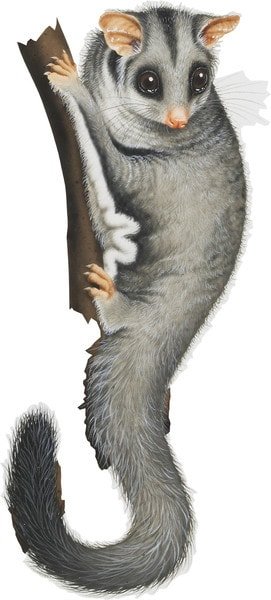
Highly endangered, the mahogany glider has a very limited distribution in tea-tree swamps, and eucalypt and grasstree woodland near Cardwell in north Queensland. It was rediscovered in 1989, having disappeared from the scientific radar for more than 100 years.
Mountain brushtail possum
Trichosurus caninus and T. cunninghamii
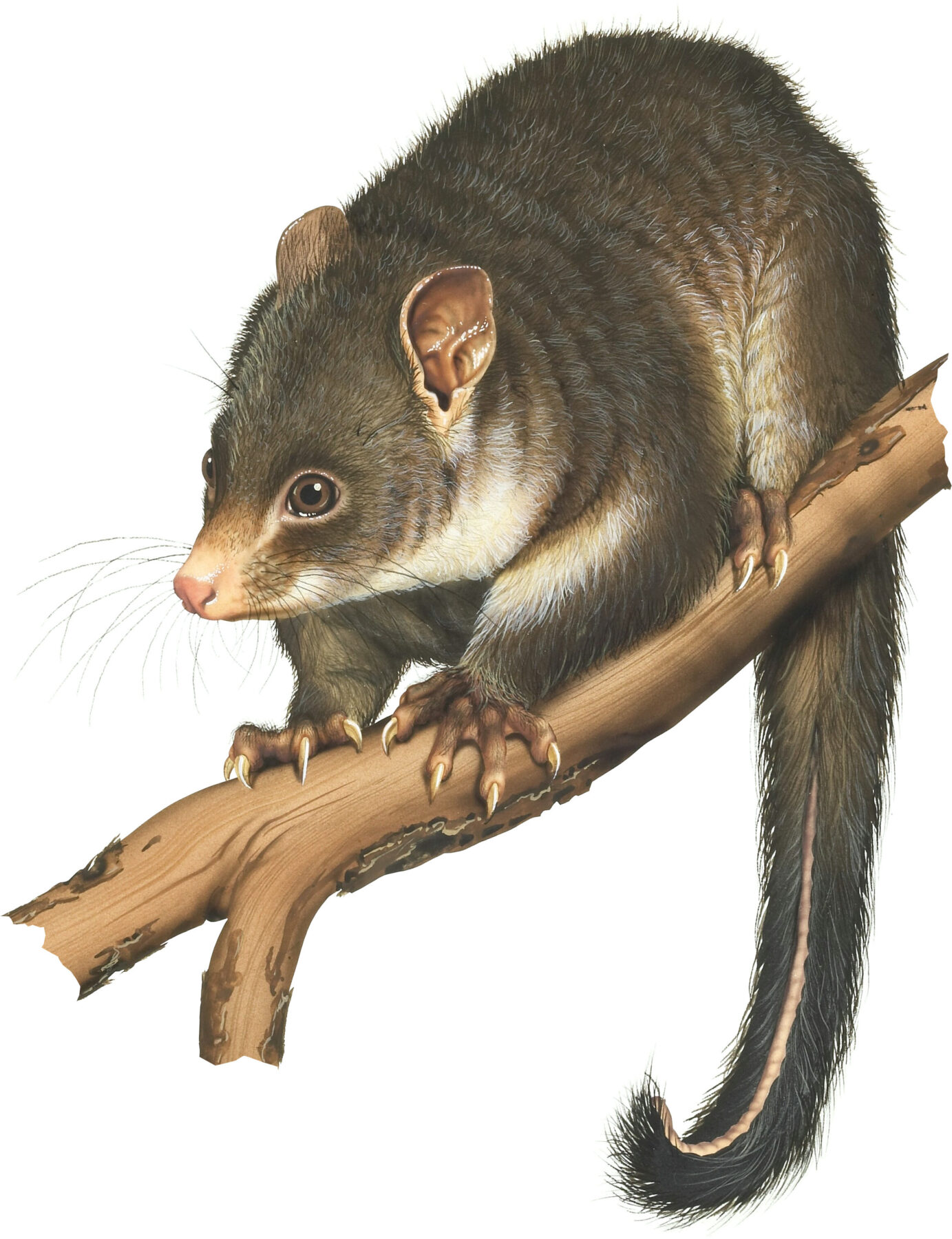
This common possum – recently split into northern and southern species – is also called the short-eared brushtail possum or bobuck. It isn’t restricted to mountains, but resides in tall forests east of the Great Dividing Range south of Gladstone, foraging on the ground and in the canopy. Steel-grey to jet black above and pale beneath, it’s the stockiest of the brushtails.
Scaly-tailed possum
Wyulda squamicaudata
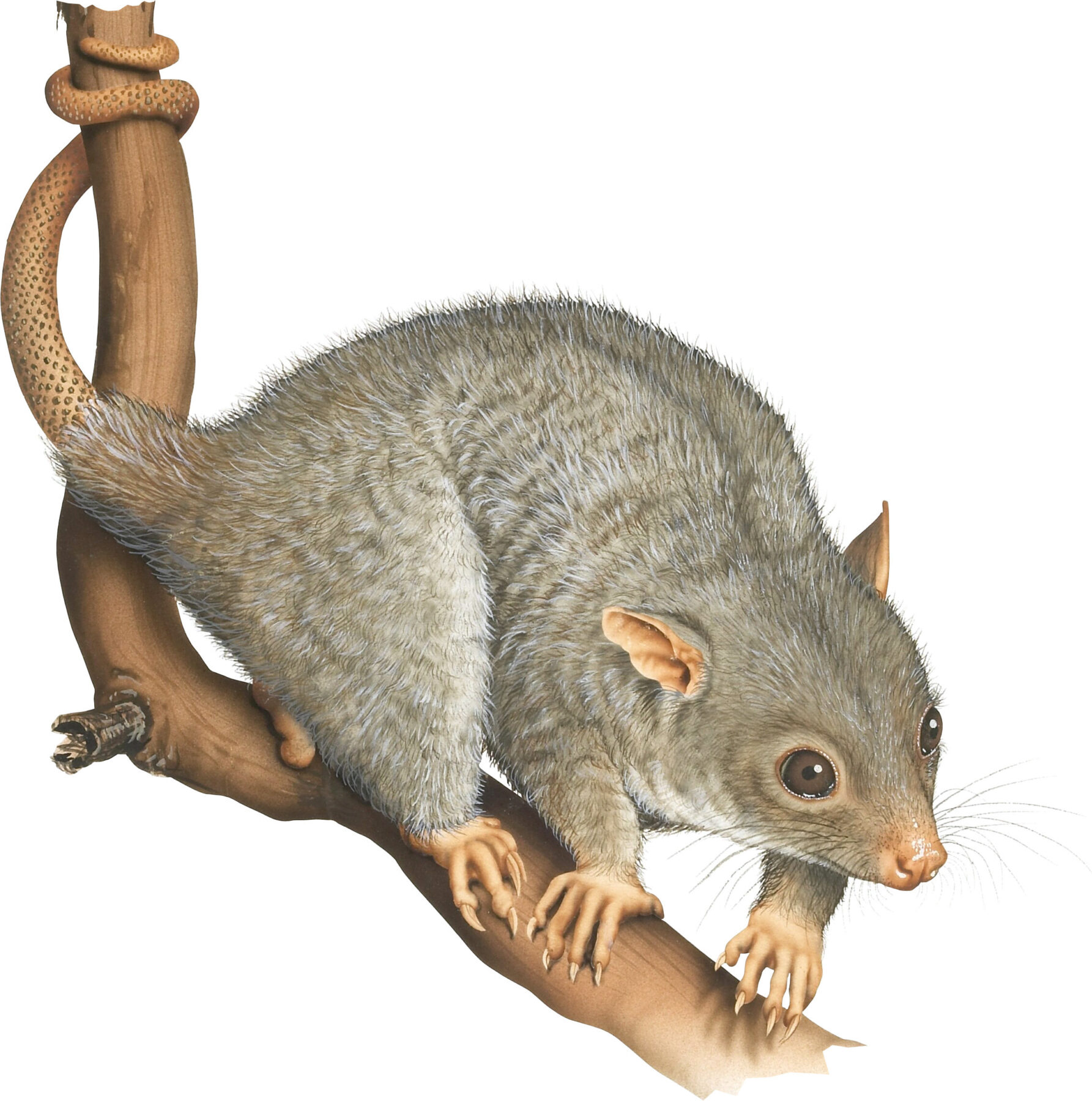
This most unusual possum has a tail with prominent bumpy scales providing exceptional grip. Australian Geographic Society-sponsored research in the Kimberley has shown that each possum rests alone in rock crevices during the day and at night forages in trees for leaves,
flowers and seeds.
Honey possum
Tarsipes rostratus
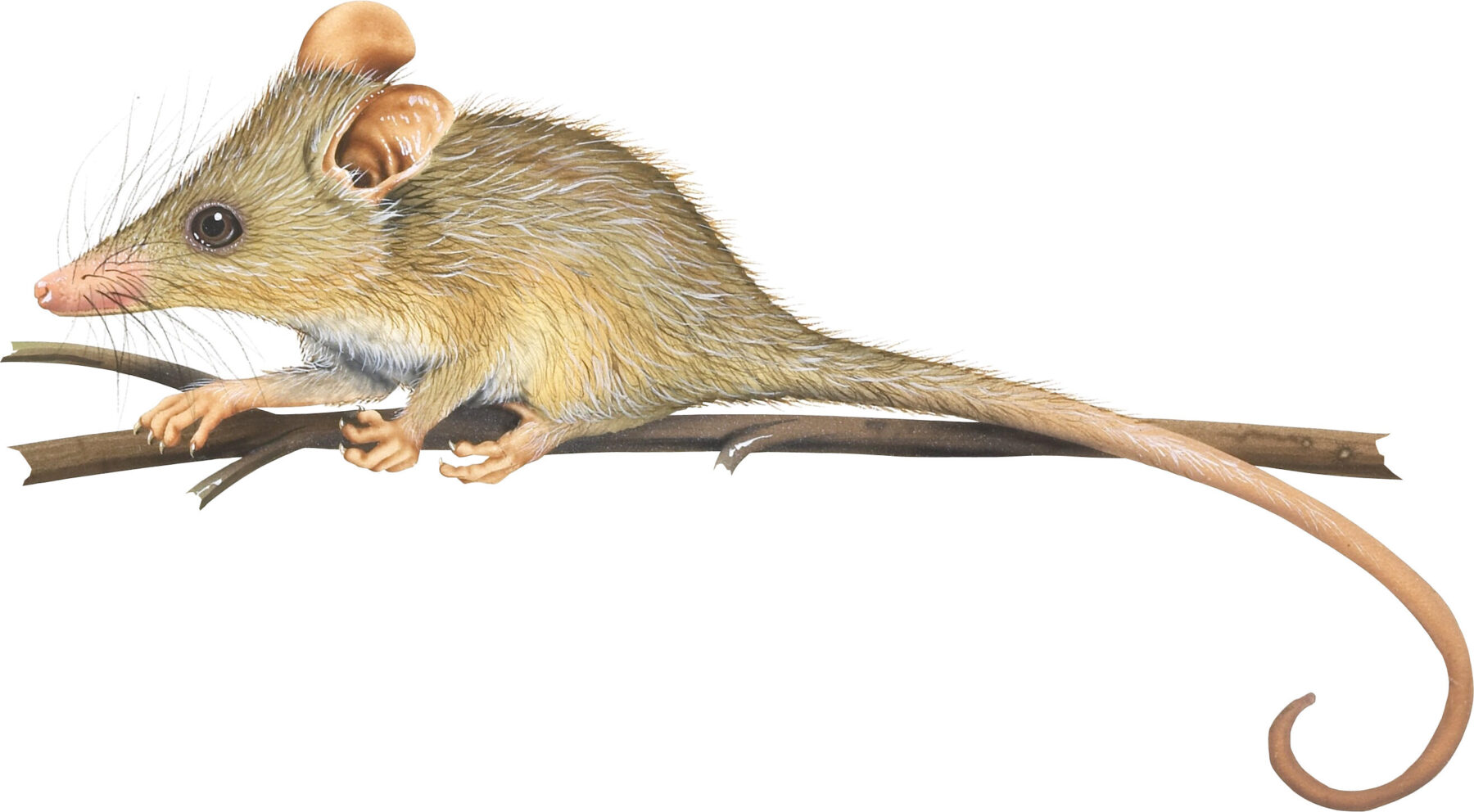
A long pointy snout and a 1.8 cm brush-tipped tongue help the honey possum reach deep into flowers for the nectar and pollen on which it exclusively feeds. Often called by its indigenous name of noolbenger, the mousesized creature is restricted to sandy heathland and forest heath in south-western Australia. The males have relatively enormous testes that take up 4 per cent of their bodyweight and produce the longest spermatozoa (about 0.3 mm) of any mammal.
Eastern pygmy-possum
Cercartetus nanus
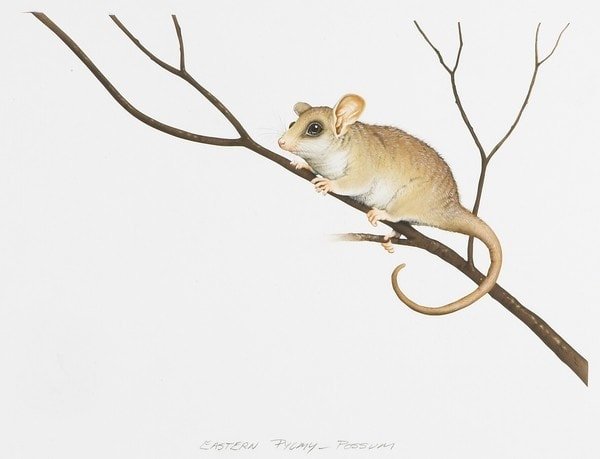
The eastern pygmy-possum is found in a variety of forests and heath in Tasmania and along the mainland’s south-eastern coast, but is listed as vulnerable in NSW. It’s about 9 cm long and uses a long tongue to feed on nectar and pollen from banksias, bottlebrushes and eucalypts, as well as insects and seeds.
Long-tailed pygmy-possum
Cercartetus caudatus
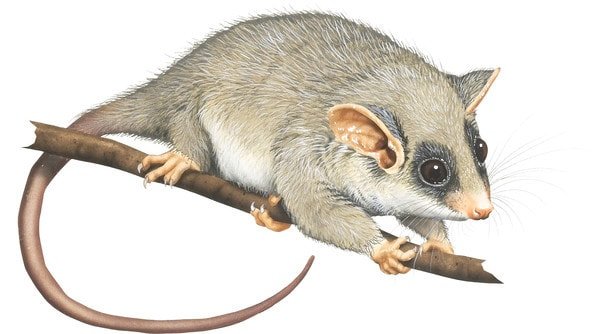
Found between Townsville and Cooktown, and also in New Guinea, this rainforest-dwelling species is surprisingly absent from Cape York. Seldom seen, the long-tailed pygmy-possum has a 15 cm tail extending from its 10 cm body and is often seen feeding on nectar of the bumpy satin ash. During the day it sleeps in a spherical nest of leaves.
Striped possum
Dactylopsila trivirgata
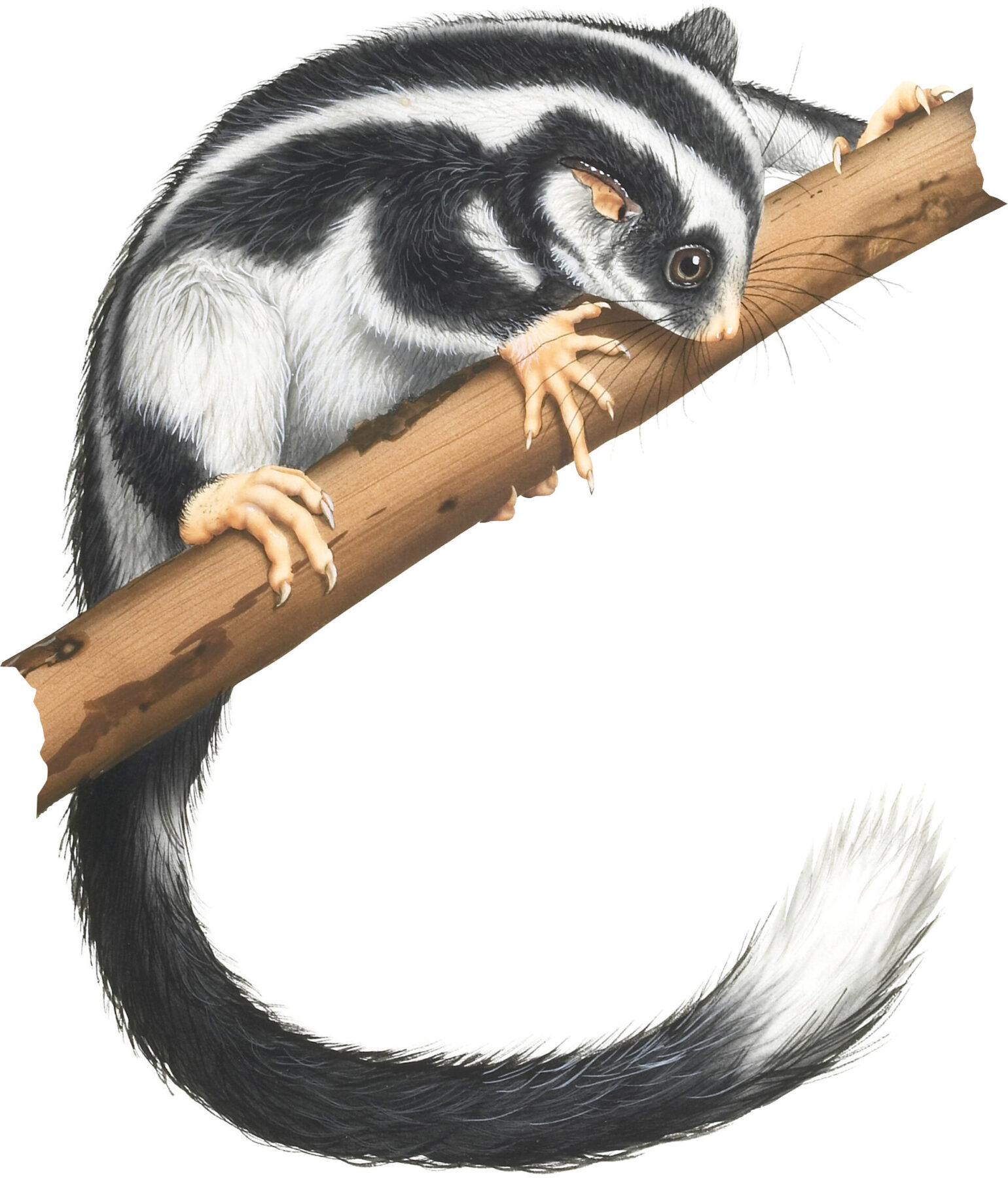
One of Australia’s most striking mammals, the striped possum moves rapidly, erratically and noisily, running along branches and catapulting itself between trees. It has a strong, musty odour and a very elongated fourth finger that it uses to probe deep holes and fissures for grubs and other invertebrates. The possum’s distribution in Australia is limited to Cape York but it is more widespread in New Guinea.
Western ringtail possum
Pseudocheirus occidentalis
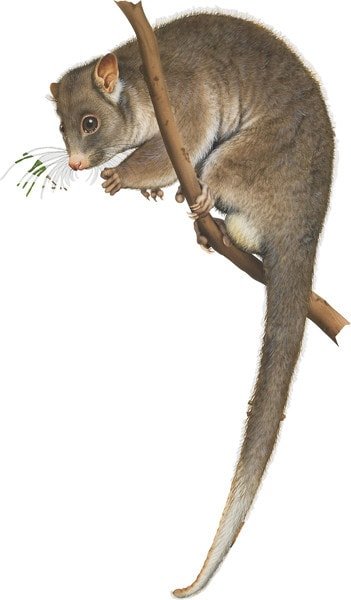
Widespread from Perth to Albany in the 19th century, the western ringtail suffered serious decline as southwest forests were cleared, and is now listed as a threatened species, with the three main populations living in jarrah and wandoo forests near Manjimup, and peppermint woodland around Busselton and Albany. It has short, round ears, and is 30–40 cm long with a similar length tail.
Little pygmy-possum
Cercartetus lepidus
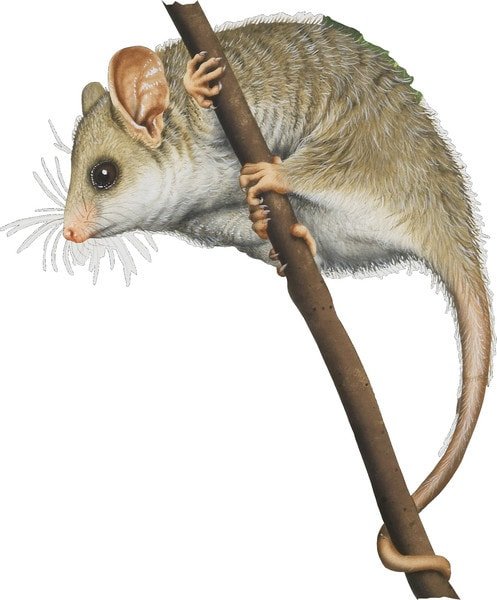
The smallest of the small, the little pygmy-possum is just 6 cm long and weighs a mere 7 g. Although it eats some nectar, it preys mainly on insects, and sometimes small lizards, in a variety of habitats, from desert to forest.
Cover image photographers: Amanda McLean, Esther Beaton, Jiri Lochman, Mark Ziembicki, Bruce Thomson and Jason Edwards
Design: Jasmine Fletcher




